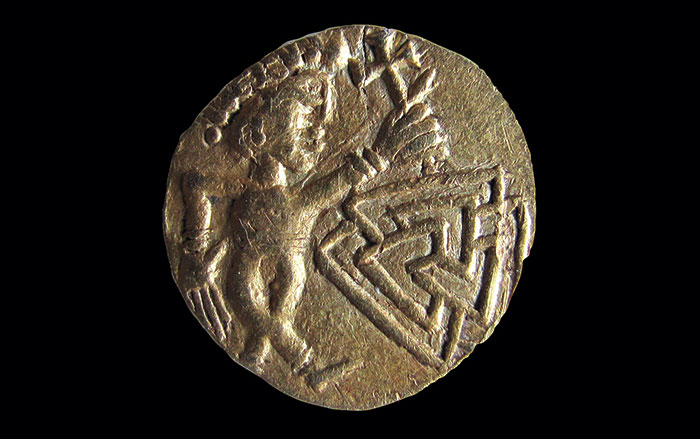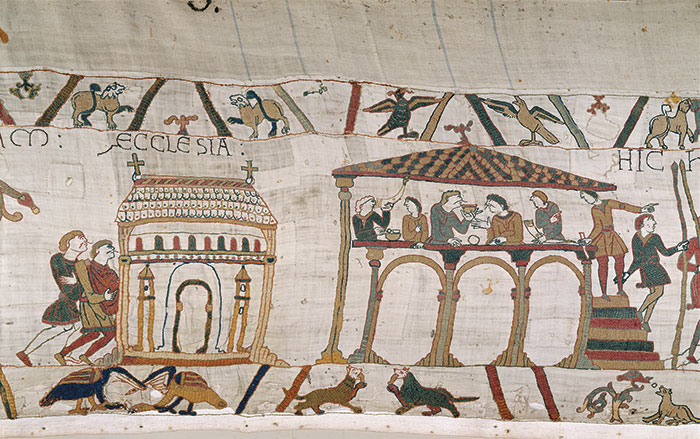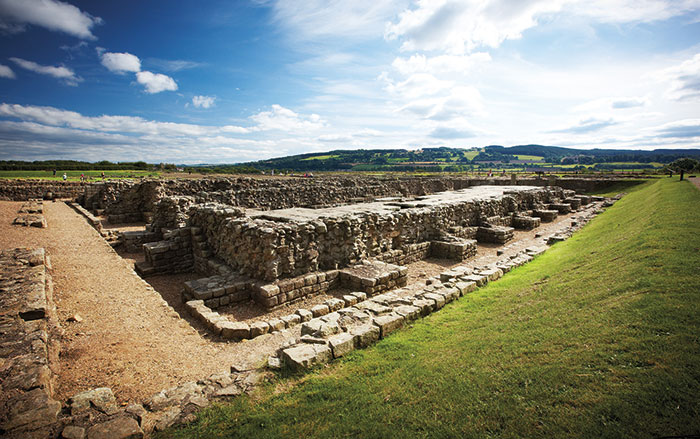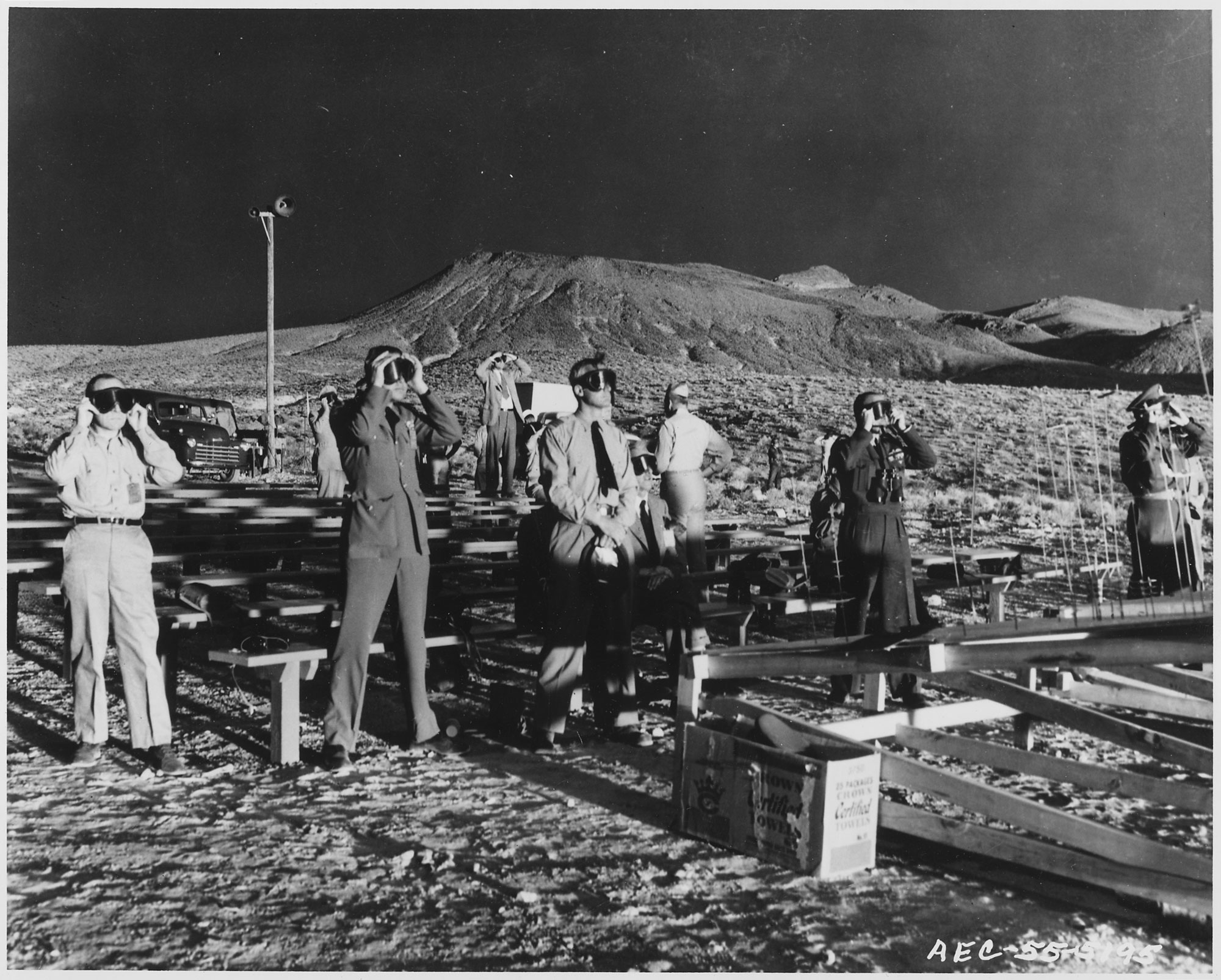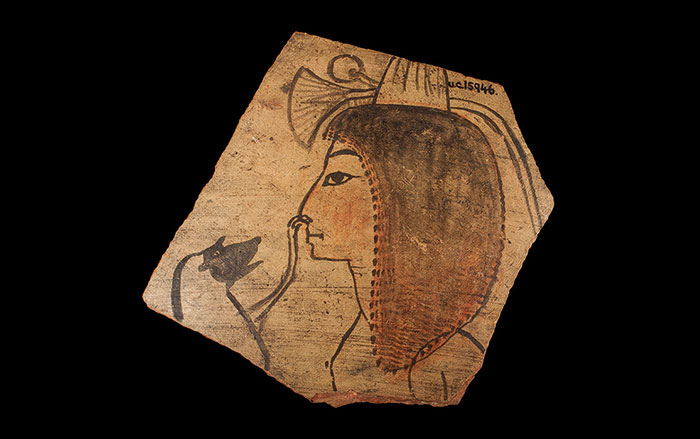
The small English village of Rendlesham, Suffolk, sits just four miles upriver to the northeast of the famed Anglo-Saxon royal burial site of Sutton Hoo. Portions of the modern village and its fields had long attracted the notice of archaeologists, and had been investigated during the nineteenth century, in the 1940s, and as recently as 1982. Evidence from these studies, though relatively scant, established that it had been an Anglo-Saxon settlement, but not necessarily with a royal connection. Then, in 2008, a Rendlesham landowner notified authorities that “nighthawks”—metal detectorists who raid archaeological sites in darkness, searching out illicit treasure—had been scouring his fields.

The renewed attention brought by the looters enabled the Suffolk County Council Archaeological Service, working with the landowner and volunteer metal detectorists, to conduct a survey, led by archaeologist Jude Plouviez, to evaluate damage and reassess the site’s archaeological potential. Now, some six years later, the investigation is ongoing, and the fields of Rendlesham are helping to fill in our knowledge of the kingdom that the Anglo-Saxon royals of Sutton Hoo once presided over. While the magnificent burials, which date from the sixth and seventh centuries, bring to mind romantic images of warriors such as Beowulf, recent archaeological fieldwork is providing scholars with a new and fuller view of Anglo-Saxon life.
Sutton Hoo is located in eastern England in an area known as East Anglia. The name derives from the people known as the Angles, a Germanic tribe that began invading and settling in Britain around the fifth century. The East Angles were among the largest and most powerful of the Anglo-Saxon tribes, ruling from centers located along the coast and river valleys in present-day East Anglia. It was there, on a small rise above the River Deben, at Sutton Hoo, that the rulers and royal families of the East Angles were laid to rest.
In 1939, wealthy widowed landowner Edith Pretty sponsored the archaeological excavation of a series of mysterious earthen mounds on her property near Woodbridge, Suffolk. The barrows turned out to be a collection of remarkable tombs, equipped with stunning artifacts, which remain among the most important examples of Anglo-Saxon craftsmanship ever excavated.
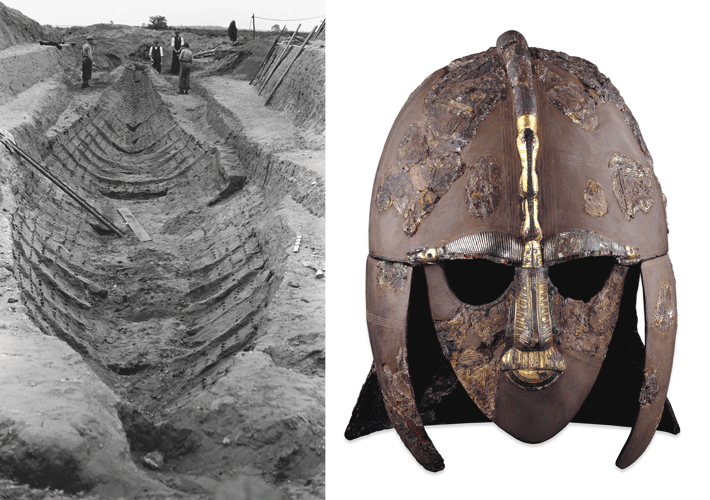
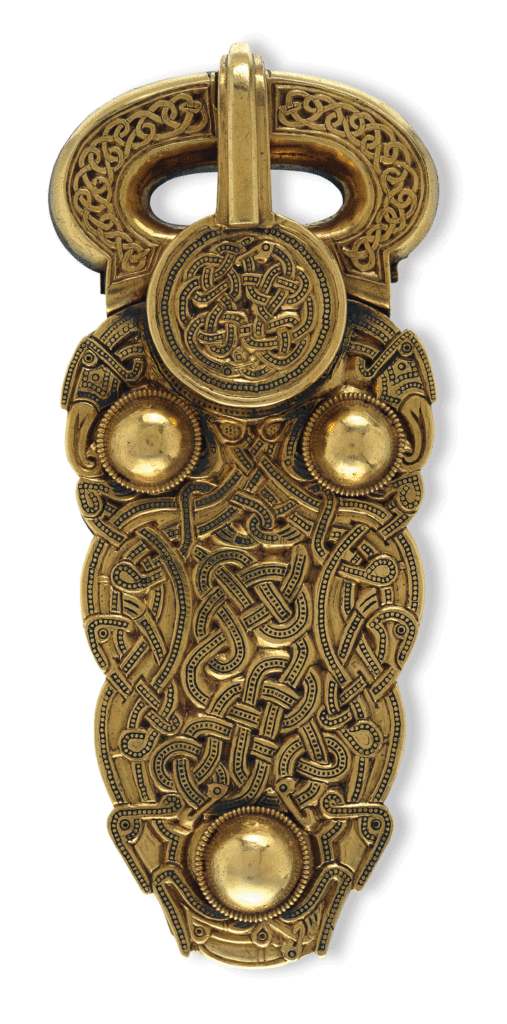
The graves of Sutton Hoo held impressive trappings of wealth. Ornate jewelry, finely crafted arms and armor, gaming pieces, musical instruments, and even an assortment of animals were entombed with the dead. But one mound in particular stood out—its occupant had been laid to rest within a nearly 90-foot-long ship filled with a multitude of objects.
Although almost nothing remained of its original wooden framework, over the course of 1,300 years, the ship’s rotting timbers left a perfect impression in the soil, allowing archaeologists to determine its exact design and size. The burial chamber was furnished with gold and garnet jewelry, silver bowls, coins, drinking horns, iron swords and spears, and a stunning warrior helmet and facemask, which, with its tinned bronze and gilt decoration, has become the iconic symbol of Anglo-Saxon archaeology. Many experts have concluded, based on the richness of the grave goods and the size of the ship, that the tomb is that of Rædwald, the most powerful king of East Anglia, who died around A.D. 625.
Sutton Hoo exists almost entirely as a cemetery, and the question of where the Sutton Hoo kings, their families, and their supporters lived has long puzzled archaeologists. Over the past three-quarters of a century, it has been assumed that the royals buried in Sutton Hoo must have resided nearby, but exploratory fieldwork revealed almost no evidence of any significant settlement. One clue, which researchers had previously followed, is found in the writings of an eighth-century English monk known as the Venerable Bede. Bede, who wrote an early history of the English people, mentions a place called Rendlesham as one of the seats of early English kings: “Swithhelm, the son of Seaxbald, was successor to Sigebehrt. He was baptised by Cedd in East Anglia, in the royal village called Rendlesham, that is the residence of Rendil.”

At Rendlesham teams of archaeologists and volunteers have surveyed a research area encompassing more than 400 acres, using a variety of methods, mainly systematic metal detection and magnetometry. More than 3,500 finds have been recorded, dating from the prehistoric period through the modern age. However, an overwhelming concentration of Anglo-Saxon material indicates the existence of a major settlement in Rendlesham, and, for the first time, conclusive evidence of the site’s long association with the kings of Sutton Hoo.
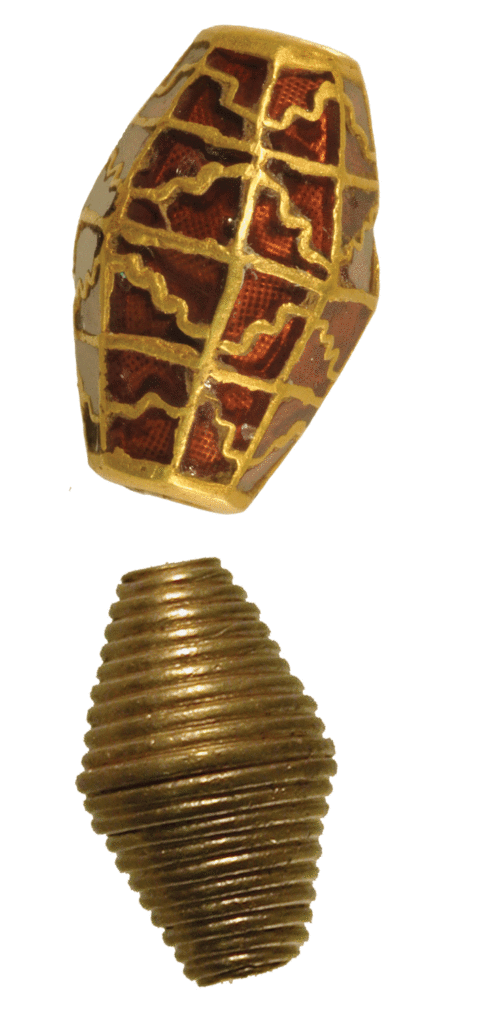
The 125-acre settlement site is significantly larger than any other known contemporary rural Anglo-Saxon site in England. Although evidence shows that it was occupied from approximately 100 B.C. until today, Rendlesham flourished from the sixth to eighth centuries, a period that coincides with the Sutton Hoo burials. While some objects found in Rendlesham, such as jewelry, gold buckles, and brooches, attest to the wealth and elite status of some of its residents, the diversity of artifacts indicates that royalty were not its only inhabitants. Rendlesham, archaeologists believe, was much more than a “royal village” for East Anglian kings, and functioned as trading post, market, and general assembly center for the region at large. The king was also likely to have had estates in the area other than the one at Rendlesham and would have circulated among them to make contact with the local populations. “The discoveries at Rendlesham are of international significance and, like all new information, are forcing us to reconsider what we think we know. Such a rich, extensive and long-lived central place is something entirely new in the archaeology of the Anglo-Saxon kingdoms,” says Christopher Scull of Cardiff University and University College London, one of the project’s archaeological advisors.
The current project has also unearthed a broad range of artifacts representing different stages of the metal-manufacturing process, including scrap metal, casting molds, and slag, indicating that Rendlesham had a thriving production industry. Weights used to calculate commercial transactions, as well as a number of coins, of both Anglo-Saxon and continental currency, support the idea that Rendlesham was also an important economic center. It is significant, say the archaeologists, that many coins were found not in hoards or caches but, rather, on the ground. They believe that the coins were dropped—perhaps at fairs held in the village—as trade was conducted. The quality of the goods discovered at Rendlesham, both domestic and imported, suggests that high-end traders came there to exchange luxury goods not only from Britain and continental Europe, but also from as far away as the eastern Mediterranean.
The rediscovery of Rendlesham has above all provided new insight into Sutton Hoo society. “We have perhaps underestimated the economic and administrative sophistication of the society that created the burials at Sutton Hoo,” says Scull. “But now we are seeing at Rendlesham how a kingdom could flourish and be ruled without the urban infrastructure—the towns—that are the hallmark of government and commerce in the classical, medieval, and modern worlds. The site challenges a lot of our current thinking about society and economy in the sixth and seventh centuries.” What we know about the kings of Sutton Hoo has so far been learned by examining their graves and funerary practices. Now, we are learning about their lives.



